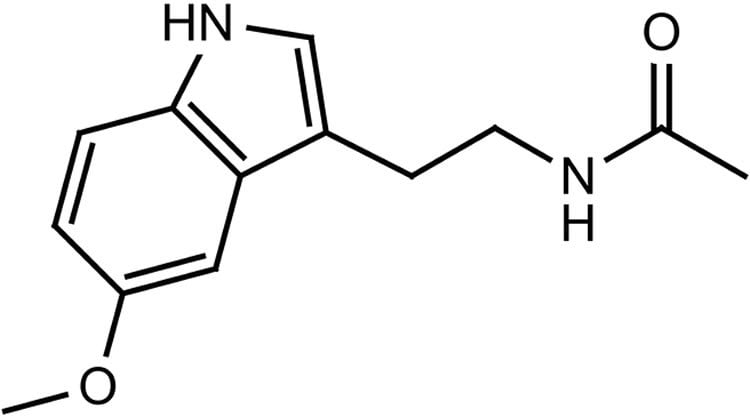Summary: Phase shifts and melatonin suppression appear to be functionally independent, researchers report.
Source: The Psychological Society.
New research published in The Journal of Physiology has illuminated the effects of night-time light exposure on internal body clock processes. This is important for helping those who have poor quality sleep, such as shift workers, and could help improve treatments for depression.
The body has an internal clock that causes various physiological processes to oscillate in 24-h cycles, called circadian rhythms, which includes daily changes in sleepiness. Light is the strongest environmental time cue that resets the body’s internal 24-h clock. Melatonin is a hormone produced in the brain at night that regulates this body clock and exposure to light before bedtime may reduce sleep quality by suppressing its production. The research team aimed to explore the link between the physiological process that enables our internal body clock to synchronise to external time cues (i.e. day and night) – called circadian phase resetting – and suppression of melatonin.
Melatonin suppression and circadian phase resetting are often correlated such that high levels of melatonin suppression can be associated with large shifts of the body clock. This association between the two responses has often been assumed to represent a functional relationship, resulting in the acceptance that one could be used as a proxy measure for the other. Circadian phase resetting is more difficult to measure than melatonin suppression, meaning the latter has often been used to assess disruption to the body clock caused by light exposure at night. However, this research has found that the magnitude of the shift in internal body clock is functionally independent from melatonin suppression. This casts doubt on the use of melatonin suppression as a proxy for circadian phase resetting. This knowledge may shape future research designed to improve treatments for depression and shift work sleep disorder.
The researchers tested the association between melatonin suppression and circadian phase resetting in participants who received either continuous or intermittent bright light exposure at night. This research procedure involved each participant completing a 9-10 day inpatient study at Brigham and Women’s Hospital, Boston, under highly controlled laboratory conditions with strict control over their sleep/wake, activity and light/dark schedules. Intermittent exposure patterns were found to show significant phase shifts with disproportionately less melatonin suppression. Moreover, each and every intermittent bright light pulse induced a similar degree of melatonin suppression, but did not appear to cause an equal magnitude of phase shift.
Despite the results of this study suggesting functional independence in circadian phase resetting and melatonin suppression responses to exposure to light at night, the study’s conclusions may be restricted by the limited sample size in each light exposure condition.

Lead author Dr Shadab Rahman is excited by his team’s findings, and is looking forward to investigating new avenues of interest they have opened up:
“Overall, our data suggest that melatonin suppression and phase resetting are sometimes correlated, but ultimately are regulated by separate neurophysiological processes. Therefore melatonin suppression is not a reliable surrogate for phase resetting. This is an important consideration for developing light-therapy treatments for people who have poor quality sleep and biological clock disruption, such as shift workers, or disorders such as depression. Additional work is needed to optimize light therapy protocols used as treatment.”
Source: Andrew Mackenzie – The Psychological Society
Publisher: Organized by NeuroscienceNews.com.
Image Source: NeuroscienceNews.com image is in the public domain.
Original Research: Abstract for “Functional decoupling of melatonin suppression and circadian phase resetting in humans” by Shadab A. Rahman, Melissa A. St Hilaire, Claude Gronfier, Anne‐Marie Chang, Nayantara Santhi, Charles A. Czeisler, Elizabeth B. Klerman, and Steven W. Lockley in The Journal of Physiology. Published April 29 2018.
doi:10.1113/JP275501
[cbtabs][cbtab title=”MLA”]The Psychological Society “Rhythms of the Night.” NeuroscienceNews. NeuroscienceNews, 30 April 2018.
<https://neurosciencenews.com/night-light-exposure-8916/>.[/cbtab][cbtab title=”APA”]The Psychological Society (2018, April 30). Rhythms of the Night. NeuroscienceNews. Retrieved April 30, 2018 from https://neurosciencenews.com/night-light-exposure-8916/[/cbtab][cbtab title=”Chicago”]The Psychological Society “Rhythms of the Night.” https://neurosciencenews.com/night-light-exposure-8916/ (accessed April 30, 2018).[/cbtab][/cbtabs]
Abstract
Functional decoupling of melatonin suppression and circadian phase resetting in humans
Continuous experimental light exposures show that, in general, the conditions that produce greater melatonin suppression also produce greater phase shift, leading to the assumption that one can be used as a proxy for the other. We tested this association in 16 healthy individuals who participated in a 9‐day inpatient protocol by assessing melatonin suppression and phase resetting in response to a nocturnal light exposure (LE) of different patterns: (i) dim‐light control (<3 lux; n = 6) or (ii) two 12‐min intermittent bright light pulses (IBL) separated by 36 min of darkness (∼9500 lux; n = 10). We compared these results with historical data from additional LE patterns: (i) dim‐light control (<3 lux; n = 11); (ii) single continuous bright light exposure of 12 min (n = 9), 1.0 h (n = 10) or 6.5 h (n = 6); or (iii) an IBL light pattern consisting of six 15‐min pulses with 1.0 h dim‐light recovery intervals between them during a total of 6.5 h (n = 7). All light exposure groups had significantly greater phase‐delay shifts than the dim‐light control condition (P < 0.0001). While a monotonic association between melatonin suppression and circadian phase shift was observed, intermittent exposure patterns showed significant phase shifts with disproportionately less melatonin suppression. Each and every IBL stimulus induced a similar degree of melatonin suppression, but did not appear to cause an equal magnitude of phase shift. These results suggest unique specificities in how light‐induced phase shifts and melatonin suppression are mediated such that one cannot be used as a proxy measure of the other.






